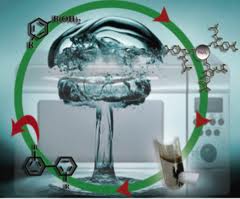Green Chemistry
“Green Chemistry” is a field of science that is based on a philosophy in the process of designing and synthesizing materials or chemicals by reducing, eliminating, or avoiding the use or synthesis of substances that cause harm and toxic to the environment. Therefore, a chemical process or step Including planning environmentally friendly operations. The heart and important mechanism of “Green chemistry” is different from environmental chemistry that studies the causes, sources, reactions, and effects on the environment including air, soil, and water, including impacts on human life activities. Due to the process of synthesizing substances or using chemicals in various ways. The chemistry at each stage of production must always be considered and remember that the chemicals will not be harmful to humans and will not harm the environment, which is an important principle of Green Chemistry. Therefore, green chemistry will focus on prevention at the root cause rather than solving problems at the end of the cause.
“Green Chemistry” looks at the roots and origins of environmental pollution problems. For example, if a chemical is synthesized or produced, it uses reactants or substances used in the reaction as well as solvents that are harmful to the environment. Finding alternative substances that are not harmful or changing the process as well as choosing solvents that do not cause pollution will be important. “Green Chemistry” considers and chooses to use it to replace old processes that cause environmental pollution.
“Green chemistry” can be embedded in various basic fields of chemistry, such as organic chemistry, inorganic chemistry, biochemistry, biological chemistry, and analytical chemistry or even physical chemistry. As well as being applied in the industrial sector where chemical processes are used in various fields such as petrochemicals, polymers, nanotechnology, etc. The same objective is to cause the least amount of pollution, but it increases the efficiency and potential of the production and synthesis process. as well as utilization.
“Green chemistry” occurred because it was found that in the production process or various activities in the industrial process all chemicals are used. Whether used as a starting raw material or used in the production process. For example, in the medical field, chemicals are involved in the matter of drug production industrial such as the plastic industry, fuel production industry, textile industry which involves the production of nylon, rayon, and polyester. Agriculture involves the production of fertilizers or pesticides, etc.
Although the products produced by these various industries are very important to our livelihood, the chemicals and steps used in the production process may cause a negative effect on the environment and health. Therefore, there is a campaign to create awareness of the environment by reducing or avoiding the use or synthesis of substances that cause harm and toxic to the environment. This is where the term “Green Chemistry” comes from.
Source : Scimath

